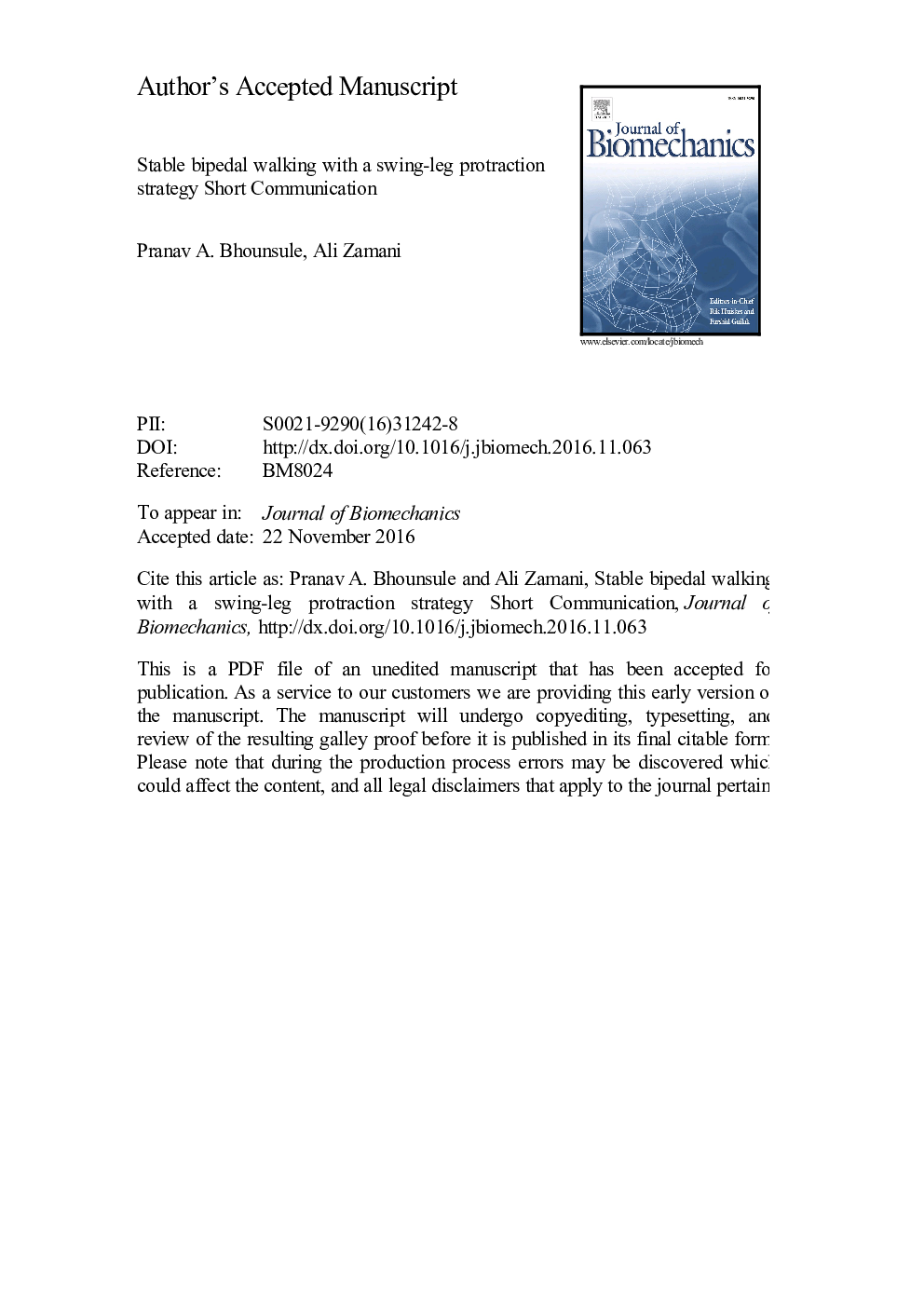| کد مقاله | کد نشریه | سال انتشار | مقاله انگلیسی | نسخه تمام متن |
|---|---|---|---|---|
| 5032084 | 1471113 | 2017 | 10 صفحه PDF | دانلود رایگان |
عنوان انگلیسی مقاله ISI
Stable bipedal walking with a swing-leg protraction strategy
ترجمه فارسی عنوان
پیاده روی دوجانبه پایدار با استراتژی استقرار نوسان پا
دانلود مقاله + سفارش ترجمه
دانلود مقاله ISI انگلیسی
رایگان برای ایرانیان
کلمات کلیدی
موضوعات مرتبط
مهندسی و علوم پایه
سایر رشته های مهندسی
مهندسی پزشکی
چکیده انگلیسی
In bipedal locomotion, swing-leg protraction and retraction refer to the forward and backward motion, respectively, of the swing-leg before touchdown. Past studies have shown that swing-leg retraction strategy can lead to stable walking. We show that swing-leg protraction can also lead to stable walking. We use a simple 2D model of passive dynamic walking but with the addition of an actuator between the legs. We use the actuator to do full correction of the disturbance in a single step (a one-step dead-beat control). Specifically, for a given limit cycle we perturb the velocity at mid-stance. Then, we determine the foot placement strategy that allows the walker to return to the limit cycle in a single step. For a given limit cycle, we find that there is swing-leg protraction at shallow slopes and swing-leg retraction at steep slopes. As the limit cycle speed increases, the swing-leg protraction region increases. On close examination, we observe that the choice of swing-leg strategy is based on two opposing effects that determine the time from mid-stance to touchdown: the walker speed at mid-stance and the adjustment in the step length for one-step dead-beat control. When the walker speed dominates, the swing-leg retracts but when the step length dominates, the swing-leg protracts. This result suggests that swing-leg strategy for stable walking depends on the model parameters, the terrain, and the stability measure used for control. This novel finding has a clear implication in the development of controllers for robots, exoskeletons, and prosthetics and to understand stability in human gaits.
ناشر
Database: Elsevier - ScienceDirect (ساینس دایرکت)
Journal: Journal of Biomechanics - Volume 51, 25 January 2017, Pages 123-127
Journal: Journal of Biomechanics - Volume 51, 25 January 2017, Pages 123-127
نویسندگان
Pranav A. Bhounsule, Ali Zamani,
